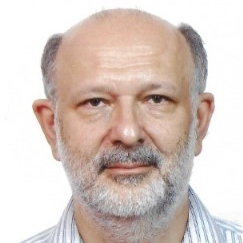Astrocytes in CNS Disorders
A special issue of Cells (ISSN 2073-4409). This special issue belongs to the section "Cells of the Nervous System".
Deadline for manuscript submissions: closed (15 February 2023) | Viewed by 43939
Special Issue Editors
Interests: regulation of GFAP expression; GFAP function; role of GFAP in Alexander disease
Interests: gliotransmission; glutamate; astrocytes; glioblastoma multiforme
Special Issues, Collections and Topics in MDPI journals
Special Issue Information
Dear Colleagues,
Over the past 30 years, astrocytes have emerged from a supporting role to co-starring with neurons and oligodendrocytes as players in CNS disorders. The number of reviews describing the involvement of astrocytes in neurodegenerative disorders published in 2021 equaled the total number for the 18 years from 1990 through 2007. Dysfunction of astrocytes is now implicated in disorders once thought to be solely of neuronal origin, such as epilepsy, amyotrophic lateral sclerosis, and depression. It is also implicated in disorders previously ascribed solely to oligodendrocytes, such as multiple sclerosis, vanishing white matter disease, and megalencephalic leukoencephalopathy with subcortical cysts. In some instances, the disease cause is a defect originating in astrocytes. The first and perhaps most definitive example is Alexander disease, in which coding mutations in the GFAP gene can cause massive dysmyelination and perturb multiple neuronal circuits. In other instances, induced disruption of normal astrocyte functions such as glutamate or potassium transport exacerbate the disease process. The purpose of this Special Issue is to illustrate the broad-ranging involvement of astrocytes in CNS disorders. Understanding their role in a variety of CNS disorders will be informative both for revealing normal interactions between astrocytes and other CNS cell types, and for identifying therapeutic targets.
Prof. Dr. Michael Brenner
Prof. Dr. Vladimir Parpura
Guest Editors
Manuscript Submission Information
Manuscripts should be submitted online at www.mdpi.com by registering and logging in to this website. Once you are registered, click here to go to the submission form. Manuscripts can be submitted until the deadline. All submissions that pass pre-check are peer-reviewed. Accepted papers will be published continuously in the journal (as soon as accepted) and will be listed together on the special issue website. Research articles, review articles as well as short communications are invited. For planned papers, a title and short abstract (about 100 words) can be sent to the Editorial Office for announcement on this website.
Submitted manuscripts should not have been published previously, nor be under consideration for publication elsewhere (except conference proceedings papers). All manuscripts are thoroughly refereed through a single-blind peer-review process. A guide for authors and other relevant information for submission of manuscripts is available on the Instructions for Authors page. Cells is an international peer-reviewed open access semimonthly journal published by MDPI.
Please visit the Instructions for Authors page before submitting a manuscript. The Article Processing Charge (APC) for publication in this open access journal is 2700 CHF (Swiss Francs). Submitted papers should be well formatted and use good English. Authors may use MDPI's English editing service prior to publication or during author revisions.
Keywords
- astrocytes
- CNS disease
- neurodegeneration
- neuroprotection
- novel therapeutic targets







